2010 Subaru Outback: First Drive

Normally when attending a press junket to test out a new vehicle I dread the threat of rain. A downpour would just ruin a good day at the track, or a convertible test drive. But when the skies opened up and the thunder cracked just moments after hopping behind the wheel of the 2010 Subaru Outback, well, it just couldn’t have been a more ideal situation to test out what the Japanese automaker refers to as the original “sport utility wagon.”
Get the Flash Player to see this player.
FAST FACTS
| 1. The base price of the 2010 Legacy may have gone up to $22,995 ($28,995 CDN), but most of the higher trim levels are actually less expensive with the top-level 3.6R Limited at $30,995 ($38,495). |
| 2. Both interior room and cargo room have been improved thanks to a longer wheelbase and wider chassis. |
| 3. A new CVT transmission helps 2.5L 4-cylinder improve fuel-economy from 20/26 mpg (city/hwy) to 22/29 mpg. |
With rain battering the windshield, inside you feel isolated from the elements yet engaged with the road. The all-new Outback may look more like an SUV than in the past, but it definitely keeps much of its car-like handling for on-road excursions. And yet, thanks to standard all-wheel drive and a ground clearance of 8.7-inches (more than a Jeep Grand Cherokee), it’s more than capable for off-road fun too.
Blasting down dirt and gravel roads and splashing through massive puddles, the Outback makes it all feel more like paved asphalt. Corners come and go without any drama, as the AWD maintains excellent grip, while the chassis stays level and the shocks (as well as higher profile tires) eat up the bumps rather than transmitting them through the cabin.
From the driver’s seat the view is excellent and you get the unique sensation of sitting reasonably low in a high-up vehicle, rather than feeling perched atop the chassis as with most crossovers.
CVT TRANSMISSION HELPS IMPROVE FUEL-ECONOMY ON 4-CYLINDER MODEL
Surprisingly, despite the Outback’s increased size, even the standard 2.5-liter four-cylinder boxer engine feels up to the task. Power is rated the same as in past years with 170hp and 170 ft-lbs of torque, but both come on 400 rpm earlier.
New for 2010 are two transmission choices, a six-speed manual or a CVT automatic. Both units help with acceleration as well, while the CVT helps in the fuel-economy department.
By tossing the old four-speed auto in favor of this CVT unit, Subaru was able to improve fuel-economy from 20/26 mpg (city/highway) to 22/29 mpg. Unfortunately, the six-speed manual is actually slightly less efficient than the old five-cog box, keeping the same 27 mpg rating on the highway, but dropping one around town to just 19 mpg.
The CVT tranny does have paddle shifters as well, which is a nice option to help give the driver a little extra control over the vehicle. CVTs don’t actually have gears though, so the paddles are pre-set to certain rpm ranges to help deliver more power when wanted. They’re also great for slowing the car on the highway or when crawling down a steep slope. Impressively, gear changes happen in just a tenth of a second, much quicker than in most paddle shift automatics.
Switch up to the flat-six and you’ll be treated to a more luxurious and powerful ride with 256hp and 247 ft-lbs of torque. The five-speed automatic is excellent and even features throttle blips on the downshift. Also important is the fact that the new 3.6-liter engine runs on regular fuel, not premium, like the old 3.0-liter.
Fuel economy is up slightly for the six-cylinder from 17/24 mpg to 18/25 – exactly the same as in an AWD V6 Toyota Venza. We’re confident it could be even better though with a six-speed box.
As for the turbo-four, it has been removed from the lineup for 2010. We’re sure a select few will miss it, but overall it was never a popular model.
LARGER PLATFORM MAKES FOR ROOMIER BACK SEAT AND MORE CARGO ROOM
We already mentioned how much larger the new Outback looks and that’s because it is – in most dimensions anyways. It measures 2-inches wider, and is over 4-inches taller. The total length has been reduced by just under an inch, but with the overhangs being cut and more space added between the wheels, the changes make for improved handling while adding room to the passenger compartment.
In total, rear seat room has been improved by about 4-inches, while both hip and shoulder room have also been increased.
Sculpted front seatbacks make the most of the space, while Subaru has included a new standard feature: reclining rear seats!
Impressively, cargo room has also grown. Space behind the rear seats increases from 33.5 cubic feet to 34.3, and with the seats down it goes from 65.4 cu.-ft. to 71.3. While some of the extra room is due to the longer wheelbase, small gains have also been made in the depth of the trunk thanks to a new rear double-wishbone suspension setup, which also helps in terms of both handling and ride quality.
There’s even a tray below the trunk-liner for smaller items, plus there’s a purposeful place to stow the cargo cover when not in use – which is a much better alternative to leaving it on the floor of your garage.
If you do need additional storage space for luggage, skis or a kayak, there’s always the roof. And as Subaru knows its owners well, the company has devised an ingenious roof rack setup. Standard on all models are two roof rails with cross bars that swing out and lock in on the opposite side.
As for the car’s tow rating, it remains unchanged at 2,500 lbs for the four-cylinder and 3,000 lbs for the six.
UNIQUE FEATURES: RECLINDING REAR SEATS, HILL-HOLDER SYSTEM
Back on the inside, this Suby comes with the usual list of standard equipment including power windows/locks/mirrors with remote keyless entry, air conditioning, a title and telescopic steering wheel with audio and cruise controls and a passable four-speaker AM/FM/CD player with an auxiliary jack.
Upgrading to the Premium model brings a 10-way driver’s seat with power lumbar, an auto up/down driver’s window and a leather-wrapped steering wheel. Outside it adds 17-inch wheels (16s are standard), as well as body painted mirrors and a chrome exhaust tip. An optional All Weather Package (certain to be popular) includes heated front seats and mirrors and a windshield wiper de-icer.
The top-level Limited trim then adds leather, dual zone climate control, a 10-speaker 440-watt Harmon Kardon audio system (optional on Premium trim) and a 4-way power front passenger seat. Unfortunately navigation is offered exclusively on the Limited trim, meaning you have to pay top dollar (and get leather) if you want GPS.
Standard safety on the Outback includes six airbags, ABS, EBD and Brake Assist as well as a tire pressure monitoring system and (now standard) Vehicle Dynamics Control.
Two new standard features for 2010 include an electronic parking brake and a hill holder. The power parking brake seems more luxurious than a hand or foot one, but doesn’t really offer anything. As for the hill holder system, we can’t help but think that it should work automatically and not require you to pres the button every time you stop on a hill. Systems like this can be very helpful, but unless you’re stopped on a 45-degree incline it’s unlikely you’ll even take the time to push the button.
THE COMPETITION
It used to be that the Subaru Outback didn’t really have any competitors, save the lone Volvo wagon model, but all that has now changed.
With the advent of car-based crossovers Subaru now has serious competition from every angle. In fact, while Subaru used to own this segment (mostly because it was the only automaker in it), this category has evolved with vehicles like the Ford Edge and Toyota Venza threatening to leave the Outback behind.
So when it came to building the new 2010 model Subaru polled its owners and those of other cars and came up with some surprising results. Outback owners wanted a car that was capable, reliable and safe. Those who bough competing vehicles valued different qualities, namely: styling, features and price. The new Outback is designed to keep all the old qualities while adding more of what people who buy other vehicles want.
THE VERDICT
Thanks to four previous generations of practice, and the foresight to see changes in the industry, the 2010 Outback has grown (both literally and figuratively), while maintaining so many of the items that made this sort utility wagon a favorite amongst its loyal buyers.
In doing so, Subaru believes it has a vehicle that is a serious competitor to not just wagons and crossover CUVs, but also to mid-sized cars and real SUVs.
The only thing it’s missing to compete with crossovers like the Venza or Edge is a bold look. The new design is part way there, although the designers at Subaru likely had their hands tied by not wanting to scare off the car’s traditional (and long standing) buyers in order to appeal to new ones.
Subaru even dropped the price on many models, including top-level Limited trim versions, although technically the base model price has gone up. Pricing now ranges from $22,995 to $30,995 ($28,995 to $38,495 CDN).
Still, we think the 2010 Outback is enough of a departure to start growing the car’s following in an emerging segment, while keeping enough of the wagon’s traditional elements to please its faithful repeat buyers.
RELATED READING
2009 Toyota Venza Review – The cool side of Camry
2009 Ford Edge – Crossover without compromise
2009 Mazda CX-7 – Has Mazda taken the whole Zoom-Zoom thing too far?
LOVE IT
- Excellent on-road or off
- Sporty and more fuel-efficient CVT transmission
- Increased interior and cargo room
- 6-cyl no longer requires premium
LEAVE IT
- Manual hill holder system
- Navigation only available on highest trim level
- Larger 6-cyl doesn’t get much extra power
- Five-speed auto. is holding back further improvements in fuel-economy

With AutoGuide from its launch, Colum previously acted as Editor-in-Chief of Modified Luxury & Exotics magazine where he became a certifiable car snob driving supercars like the Koenigsegg CCX and racing down the autobahn in anything over 500 hp. He has won numerous automotive journalism awards including the Best Video Journalism Award in 2014 and 2015 from the Automotive Journalists Association of Canada (AJAC). Colum founded Geared Content Studios, VerticalScope's in-house branded content division and works to find ways to integrate brands organically into content.
More by Colum Wood














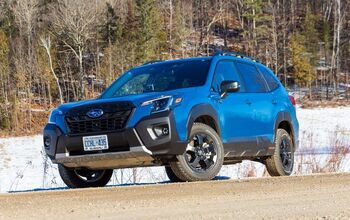
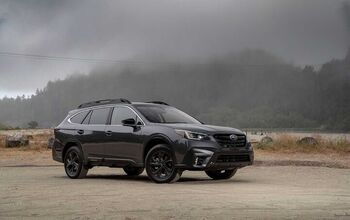


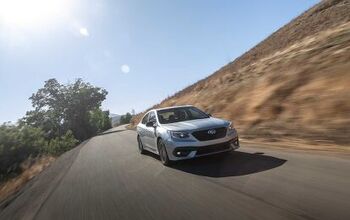
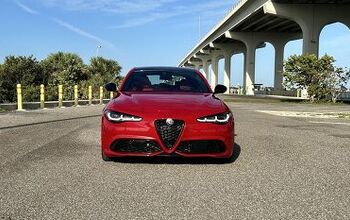
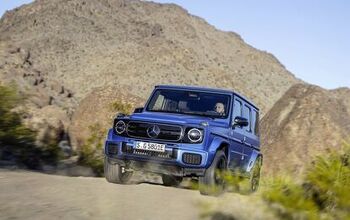

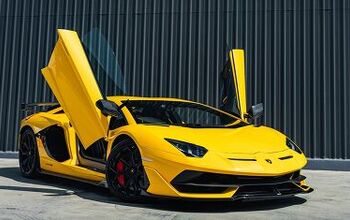
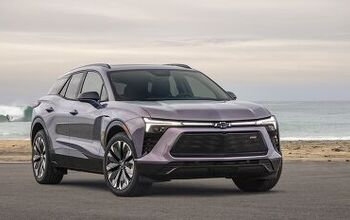

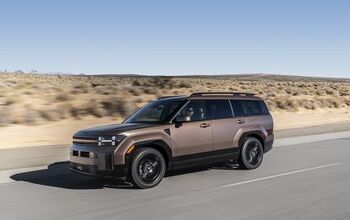

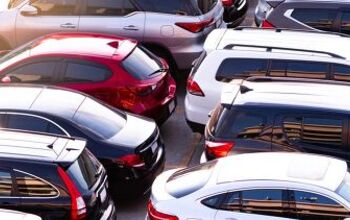
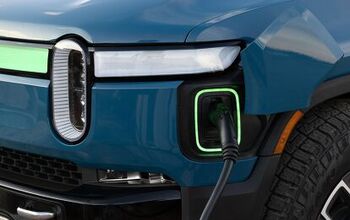
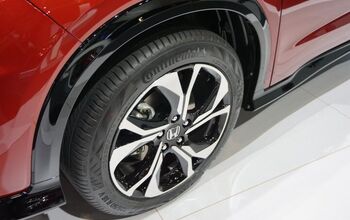

Comments
Join the conversation